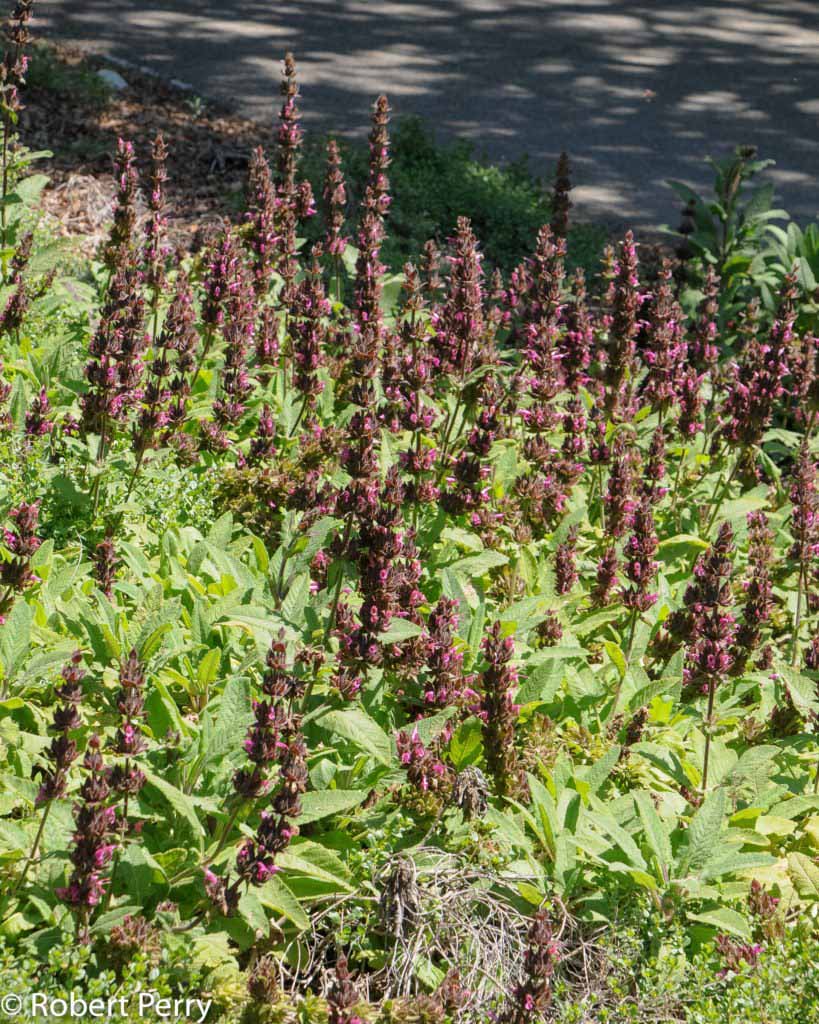After spring / early summer flowering, can be headed back by removing as much of the new-ish growth as desired (1). Doing so immediately after the first bloom encourages subsequent blooms, but sacrifices the development of seeds for wildlife to eat (S). Remove dead seed heads in the Fall (October), but save deeper pruning for Spring maintenance (1). Consider leaving some of the pruned dry seed heads in the garden for food, nesting material, and habitat for birds and other critters you want around (S). Spent flower stalks can also be removed any time during the season (7). Regularly pinch back young plants to encourage dense growth (7). During the first season in the ground (or if still in the pot), consider also pinching out emerging flower stalks / buds. This will create a bushier plant and keep the plant focusing energy on growth instead of on a single huge flower cluster in the first year. Sometimes young plants seem to put all their resources into flowering the first year, then die quickly once the summer heats up. Pinching out buds can help avoid this (S). Older plants that look like they need refreshing can be cut back hard into older wood in November. Expect new growth to emerge within a few weeks (1). Can be carefully divided to propagate in the Fall (2). Plants will grow in significant shade, but are often impacted by unsightly powdery mildew if growing in these conditions. It is hard to fight, so either plan to accept its presence seasonally, or plant in more sun. If growing in shade, avoiding overhead watering (using drip irrigation instead) can help discourage powdery mildew, which thrives in moist conditions. If you find that you have planted your Hummingbird Sage plants in too much shade and they are suffering from too much powdery mildew, they are usually relatively easily to transplant to sunnier conditions. This is best done in fall or very early spring (S).
References










